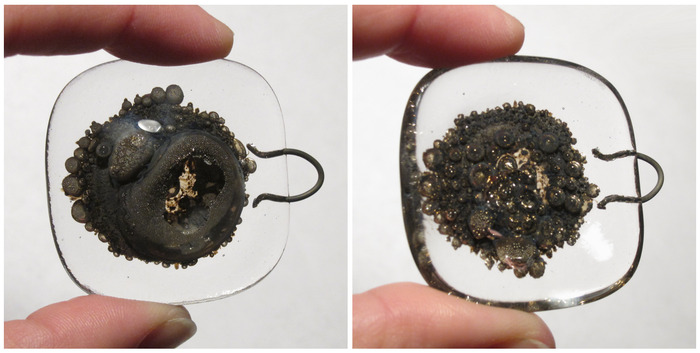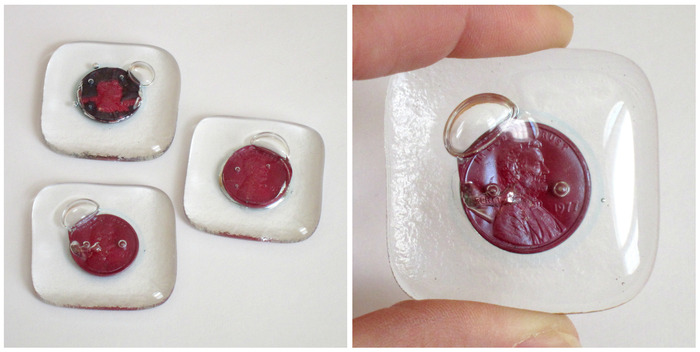What would happen to a penny if I fused it between two layers of glass?
I came across an article that sounded like someone has tried to do it an succeeded. There was no fusing schedule or a picture, but the author suggested that the best way to find out what would happen to the penny was to try and see for yourself.
After 1982, pennies were made of zinc with a thin copper coating. The melting temperature of zinc is lower than the full fuse temperature of glass, which to me meant that the coin most probably would not stay intact. I was not holding much hope, but still arranged a couple of post-82 pennies between two pieces of glass and fired them slowly…
Guess what? Zinc has boiled, broke through the top layer of glass and made a lot of smaller bubbles covered in zinc granules. It was far from pretty, perhaps it could be interesting only if one was trying to depict hell in one's work… I am not planning to do that just yet, so this experiment's result will be stashed as a "was nice to know item".
Pennies minted before 1982 are mostly copper. I took a couple, cleaned them with copper polish, then washed them with soap and wiped with a cloth dipped in alcohol to remove any residue. I sandwiched them between pieces of glass and fired slowly, approximately three times slower than my trial run with zink pennies. Since melting temperature of copper is much higher than full fuse temperature of glass, I was practically sure that the coins would stay intact. So, since I was practically sure of success, by going at a slower rate I was trying to eliminate air bubbles and glass fracturing during the cooling stage.
The experiment both did and did not work. On one hand, the pennies did stay intact, so the design was as sharp as before firing. On the other hand, some of them have discolored in patches even though I have cleaned them. Also, there were not only air bubbles but also stress fractures - perhaps, even slower firing would remedy that.


